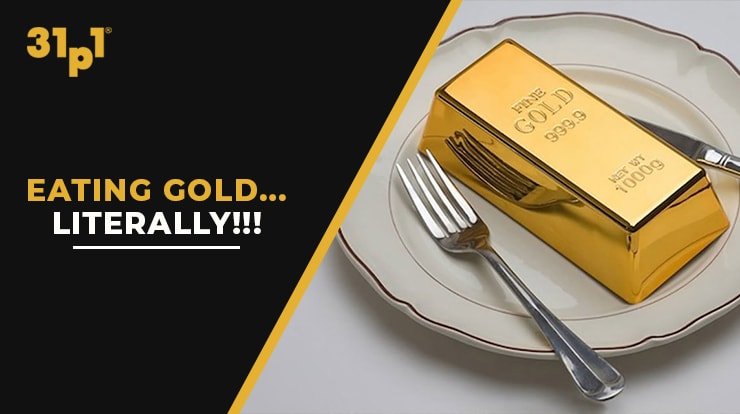
Being a child, I’ve always been inquisitive about different things I couldn’t get my head around. With a new appetite and interest in food, I was regarded as the young foodie at my home. Spending a healthy childhood and grown with a passion for food, I went on a digital venture to explore foods around the world and the traditional cuisines. Then one day, while surfing the internet, I came across a substance used in food prepared by a high tier restaurant, with which I was so familiar and yet so unaware of the fact that it’s EDIBLE…
Any guesses which substance I’m talking about … (Yeah, I know you followed here by reading the title, but still…) it is GOLD.
For centuries, gold is used for making jewelry, in trade and industrial machinery, and much recently as an investment option. People buy gold mostly in the form of jewelry to don themselves with it and flaunt, signifying their status, power, and wealth to the society.
Gold and food are not that synonymous with each other, and it might take time for someone to understand it who’s encountering the fact the first time. However, not new to the world, gold has been used in food for a quite long time. Restaurants use gold leaf on top of a specific signature dish by a Michelin star or just to glorify the look of any food altogether. Apart from restaurants, gold is used as flakes in wines (Blue Nun 24K Gold Edition sparkling wine), water (Beverly Hills 90H2O), chocolate (DeLafée’s Chocolate with 24 karat edible gold flakes) and even pizza (Industry Kitchen’s Golden Pizza) and other food items you can imagine to have a glittery touch on it. Gold is used in high-end delicacies and therefore commands a premium price over any dish it embellishes.
Now, you can’t eat gold out of your jewelry or other ornaments, because edible gold has set standards. Edible gold must be at least 23 carats pure. The edibility of gold in food is known as E-175, according to the European Food Safety Administration (EFSA), when used as an additive or food coloring. A gold leaf must be 90% pure with other edible metals like pure silver. Gold used in jewelry is not 100% genuine due to its malleability, and therefore other metals like copper and silver are used to harden it.
Gold is inert in nature and therefore considered non-toxic. When ingested, it doesn’t digest and passes out. Gold has its medical usage where it used as a treatment for “Rheumatism“. Gold may elevate your dining experience; however, one shouldn’t make gold a daily part of one’s diet.
Buying gold-coated food may cost you a lot, but who doesn’t want an exquisite and exotic dining experience once in their lifetime?